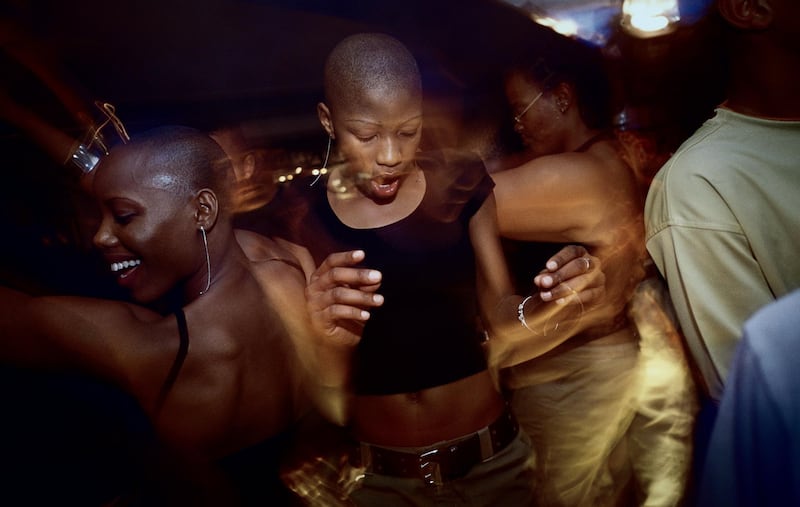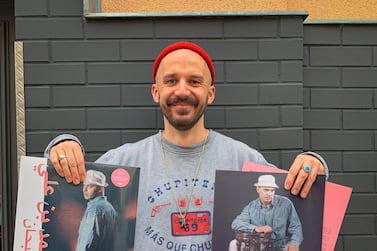The glimmering facades of the the Dubai International Financial Centre are a far cry from the gritty townships of South Africa.
What links the two, however, is an enthusiasm for a new electronic music genre that is making its presence felt in clubs throughout Africa.
That new sound is called amapiano – a vibrant and heady mix of deep house, gospel-inspired keyboards and traditional percussion. It’s fun, funky and impossibly cool.
It also has the potential to overtake Afrobeat as the next popular genre to emerge from the continent.
Dubai got a taste of this burgeoning, male-dominated movement thanks to the DIFC lounge Fogo de Chao dedicating its Thursday nights to playing tunes from the genre.
“It is chilled, it has a groove and you don’t need to dance to it,” says Muhammad Bani, the club’s managing director.
“With Covid-19, we can’t do certain things like have a dance floor. But amapiano has such a great sound that you can also listen to it in a lounge setting. You can hear it for what it is or have it play in the background while you chat with friends.”
A sound forged in the club and church
Amapiano’s journey to Dubai was also made possible by the same technological force that helped spawn it.
Emerging around 2010 in the townships of Pretoria and Johannesburg, the music traces its roots to clubs and the church.
Its synth leads, low drums and barrelling basslines come from Bacardi House, a local dance genre viewed as “the groove of the townships”.
The spiritual addition to amapiano comes from the rich notes from the genre’s gospel-tinged piano riffs.
With many independent artists lacking the finances to distribute their music, the genre’s first batch of songs was shared on phones, making it, perhaps, the only dance genre where an artist can sell out a club on the back of a WhatsApp release.
It wasn’t long before major backing arrived, with big South African record labels and television stations getting involved and making stars of artists Kabza De Small, DJ Maphorisa and Sha Sha.
Underscoring that potential is Spotify, which recently launched a seven-hour Amapiano Grooves playlist full of hits by the genre’s leading names. This is in addition to the streaming giant providing a collection of amapiano artists with music industry masterclasses last year.
"It is indeed an interesting mix of sounds," says DJ Sumbody, a Pretoria spinner and producer whose track Suk'emabhozeni features on the playlist.
“This is why the music sounds light, like house music, but intense. Especially for South Africans, we hear those church pianos and it immediately brings back memories and that nostalgic feeling.”
Through his mixtapes and 2018 hit Monate Mpolaye, DJ Sumbody has been riding the wave of amapiano with sold-out club shows across the continent. He is keen for the music to crossover internationally.
“If it wasn’t for Covid-19 then maybe the music would have been there already. I am confident that it will do well in places like Ibiza and even your big clubs in Dubai and Abu Dhabi,” he says.
“What the music needs is a chance. Once you hear it, you will love it. That is because the sound is sophisticated but at the same time it is filled with tough street hooks from the townships. You hear it and it will definitely grab your attention.”
Less is more
That was the case for Congolese beat-maker Kaysha, a popular Kizomba artist who this year released Bougie Love, an EP of amapiano tunes, as part of his side project, Diamantero.
.
"The first time I heard about this music, a few years ago, I didn't really think much of it," he tells The National. "But then a few months later I decided to hear it again and really began to find it interesting. I thought this was an interesting sound that I wanted to explore."
It also made the genre a perfect vehicle for Diamantero, a project in which Kaysha can shed his Kizomba style (responsible for pan-African hits Love de toi and One Love) and try his hand at the new genre.
“I like to approach the music as an outsider,” he says. “And that’s what I did with amapiano. I was curious and wanted to learn everything about it. I would pull the track apart to hear how it operates.”
And what did he find?
“I realised that there was no kick drum to the songs and I remember thinking that was strange,” Kaysha says. “That’s why the music is less aggressive than other dance styles.
I remember studying it further and I realised that it was the bass that was moving the song along. People were not dancing to the drums or the shakers, but to the actual bass lines.”
It was the same realisation enthralling DJ Tunez, a Nigerian producer known for the Afrobeat hit Iskaba and working with the genre's leading lights Wizkid and Burna Boy.
“That amapiano sound is crazy,” he says. “Without the kick drum, it gives the songs a different vibe. It basically makes the whole music sound as one big, relentless build-up and that’s where the energy of the songs comes from.”
That said, Tunez wanted to see how amapiano would sound in a club. With the absence of kick drums and the genre’s languid tempo (amapiano tracks normally run on 115 beats per minute while normal club-ready tracks function at an average of 150), Tunez was curious to see if it would generate the same buzz from a party crowd.
“A lot of what a DJ does is try to raise people’s heart rate,” he says. “Last year, when I visited Johannesburg, I saw a gig by DJ Maphorisa and I am not lying to you when I say the crowd was lit. He played nothing but amapiano songs for five hours straight and didn’t even change the tempo. That was so crazy to me and the crowd were absolutely loving it. That’s when I knew that this could be the next big sound coming out of Africa and that it could really go global.”
A united effort
For that to happen, the genre needs more than influential supporters or a hit amapiano remix of a Beyonce song.
What is required, says Ghanaian-British producer Juls, is for the music to be presented with a united front – and a little dash of savvy marketing.
“This was how Afrobeat became popular,” he says. “It was called all kinds of genres before it came to the UK, but once it came here and old-school DJs started to play it and it became popular, then radio came in and wanted to play these tracks. The scene here decided to give it a name and that’s when they called it Afrobeat.”
Juls, who recently dropped his amapiano-inspired Happy Place, said Afrobeat prospered whereas other African genres stalled owing to artists across Africa supporting the cause.
“And that’s how you keep a genre strong,” he says. “It is all about building it collectively and working together and maybe that will be the case with amapiano.”
But some habits die hard. The challenge that amapiano faces, Kaysha says, is the territorial nature of musical scenes across the continent.
“A lot of times when it comes to music from Africa, we love a certain genre and we want to share it with the world, but then when someone outside Africa does it we get angry and walk away from it,” he says. “But I understand the reason behind this: it comes as reaction to the colonial era and the scars that came with that.”
Kaysha also views the success of Afrobeat as pointing the way forward for amapiano.
“Why is Afrobeat so popular? Well, it’s not only because of Nigerians and their spending power. It is because all Africans got behind it,” he says. “And this is what we need more of in the music industry today. We need a kind of pan-Africanism. It’s about working together collectively and showing the world our talent and being able to tell our own stories.”







